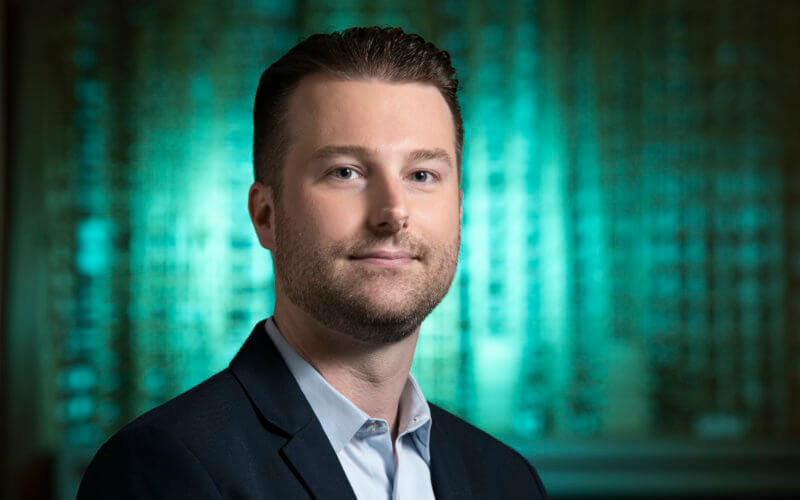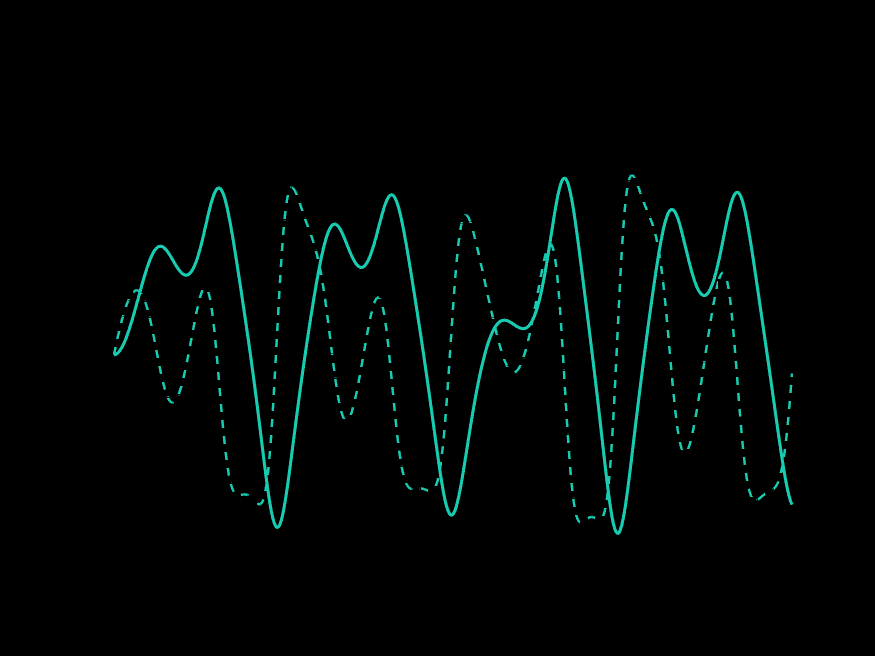
John W. Sanders, associate professor of mechanical engineering, is using ideas from quantum gravity research to help engineers predict a phenomenon called “resonance” in structural engineering.
A classic illustration of an engineering disaster caused by resonance is the Broughton Suspension Bridge in Greater Manchester, England. In 1831, a troop of soldiers, so the story goes, marched across the bridge and found out that they could cause large vibrations in the bridge by timing their steps at just the right frequency — one of the bridge’s resonant frequencies.
“The problem was that the resulting vibrations caused one of the coupling-bolts to break. As a result, the entire bridge collapsed. That is why today, soldiers always break step when crossing bridges,” Sanders said.
Sanders added that everyone is familiar with resonance, even if that word sounds foreign.
“Think of pushing a child on a swing. If you keep pushing the swing every time it comes back, the child will swing higher and higher — up to a point,” Sanders said.
“The same thing can happen to bridges, buildings or any other mechanical system. If a structure is forced in just the right way, oscillations become amplified, and that can lead to failure. That is what we mean by resonance.”
Structural engineering deals with the design and development of safe and stable structures. Engineers account for resonance when they design structures, such as a bridge or building. To do that, they need to predict a structure’s resonant frequencies before it is built.
“Calculating resonant frequencies is complicated by the presence of damping,” said Sanders. “Damping is the tendency of a system to lose mechanical energy, often in the form of heat. All real structures have some amount of damping.”
The currently accepted method for computing damped resonant frequencies was developed in the 1950s and has been the industry standard ever since.
But now, Sanders has discovered a faster algorithm, which is more efficient than the standard method because it involves fewer computations. His work was recently published in the journal Nonlinear Dynamics. A follow-up paper is currently under review for publication.
“In computation, speed is king. Given the choice between two algorithms that do the same thing, the faster algorithm is always preferable. This new algorithm could replace the older algorithm currently used in industry to compute resonant frequencies — and it would save computation time.”
To do this, Sanders took inspiration from a seemingly very different field: quantum gravity physics. The two pillars of modern physics are quantum mechanics, which accurately describes nature at extremely small scales, and Einstein’s general theory of relativity, which accurately describes gravity at large scales. Physicists are currently trying to reconcile the two theories, which are mathematically incompatible with one another, Sanders noted.

One of the ways physicists have attempted to solve the problem is by looking at what are called higher-derivative theories.
“A derivative is just a rate of change. The velocity of your car, for example, is the rate at which it is moving. The acceleration of your car is the rate at which its velocity is changing. Acceleration is an example of a second-order derivative,” Sanders explained. “The equations that appear in physics tend to involve second-order derivatives like acceleration. A higher-derivative theory might involve a fourth-order equation, for example.”
It was fourth-order equations that caught Sanders’s attention.
“I realized that fourth-order equations offer a practical way to handle damping,” said Sanders. “You can basically sweep the damping terms under the rug with a fourth-order equation. You can’t do that with a second-order equation. One immediate application is this new, better way of computing damped resonant frequencies.”
Sanders relayed that his discovery is exciting for a number of reasons.
“On a basic level, we now have a much more efficient way to compute the resonant frequencies of damped systems, which is really useful,” he said. “Beyond that, we have made a connection between two seemingly very different fields of study: engineering mechanics and quantum gravity physics. This connection could lead to more discoveries in both fields.
“I have always loved physics. We use physics every day in engineering. It’s exciting to see the two fields play off of each other in unexpected ways.”